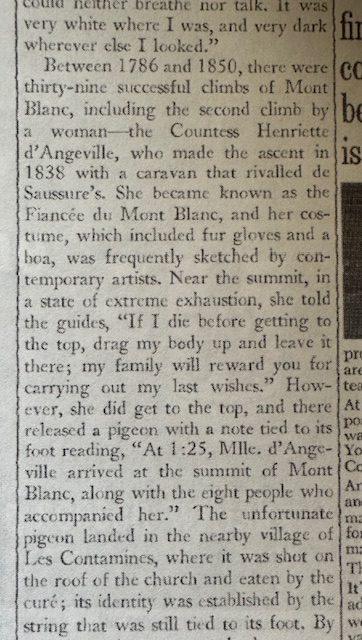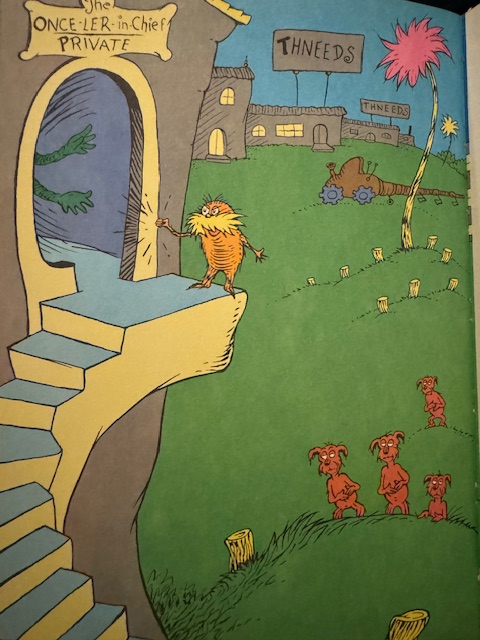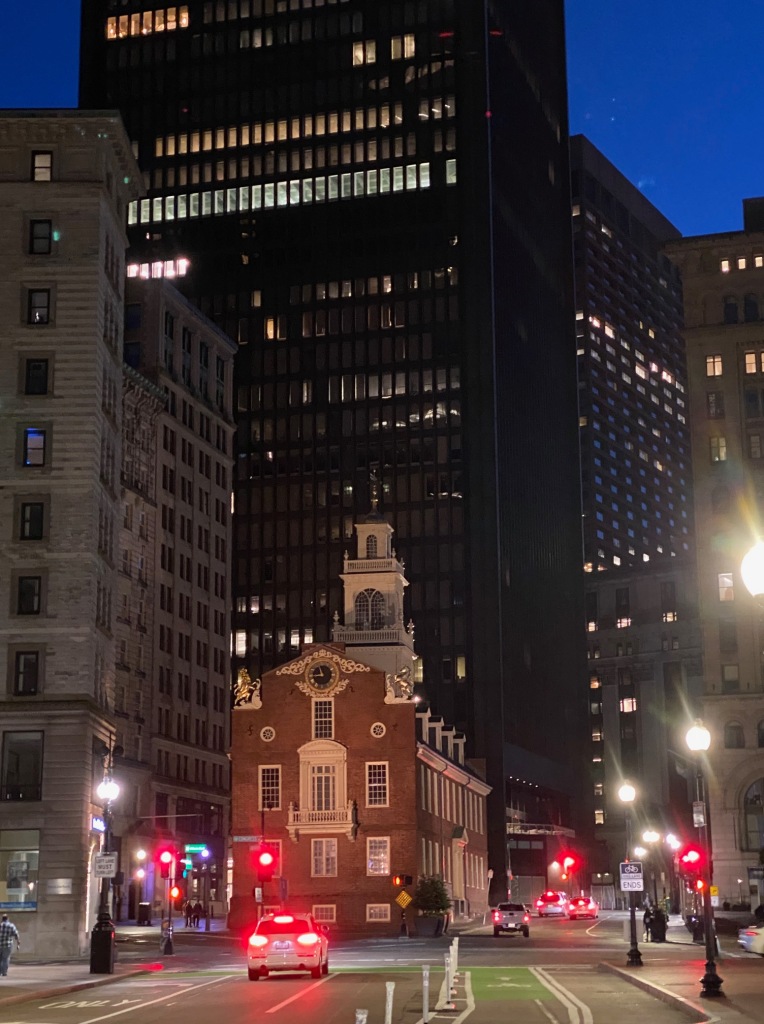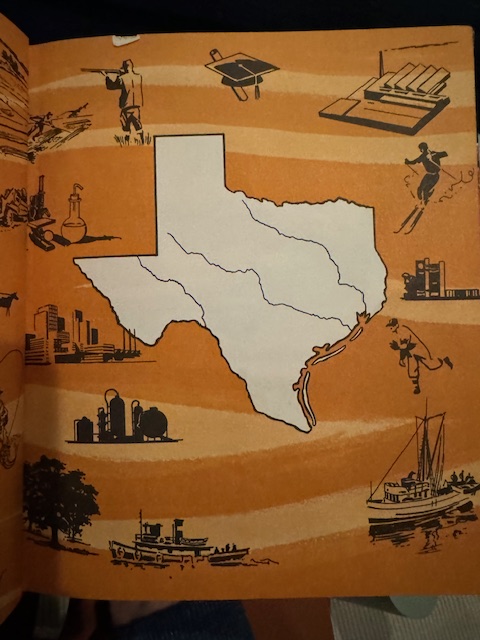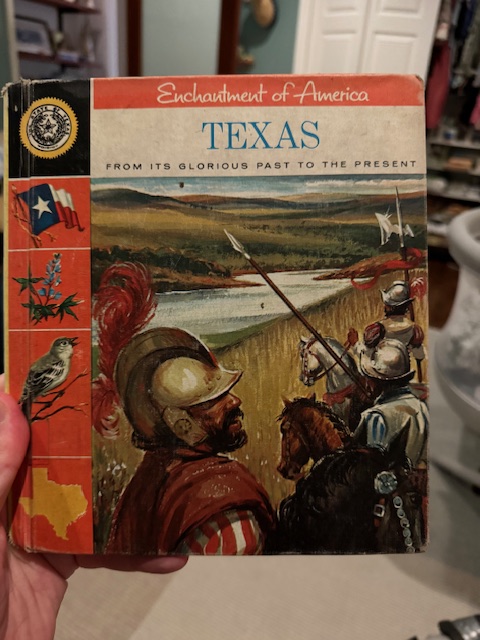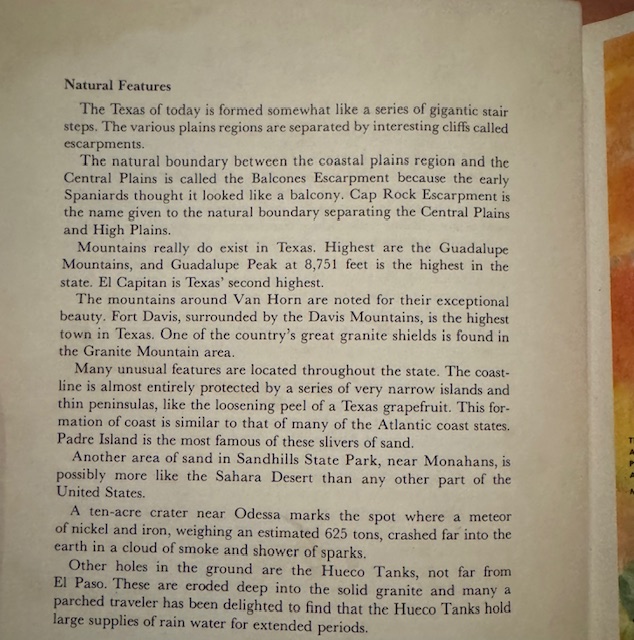The first woman to climb Mont Blanc
Posted: April 26, 2024 Filed under: mountains, Switzerland Leave a comment
from a March 06, 1965 New Yorker article about Swiss mountaineering by Jeremy Bernstein.
The Official Records of the War of the Rebellion
Posted: April 19, 2024 Filed under: War of the Rebellion 1 CommentThe first time I went to look at the Official Records of the War of the Rebellion at the LA Public Library (Central, Geneaology and History Department) the librarian said “it’s… it’s a lot” and then he showed them to me:

Before the Civil War was even over they’d started compiling the official records: every report and bit of correspondence they could gather.
Some of it is dull, and some of it is very vivid:

Seven Samurai
Posted: April 14, 2024 Filed under: movies, war 1 Commentinterview with Edward Luttwak:
Then there are people who are more familiar like Akira Kurosawa. Anybody who has actually been involved in war – in fighting, in using weapons – knows that Seven Samurai is a complete course on how to train fighters, raise their morale, and command them in war. When Seven Samurai came out, people quickly realized that it was a film that had to be watched three or four times in a row, and then every few years. And people did that, very commonly.
I have actually trained men to fight in war, and I have sat them down and made them watch Seven Samurai, and they complained a lot. Then a few of them wanted to see it again. Then after a while, all of them wanted to see it again. All of them learned a hell of a lot from that film. Leadership, cohesion, morale, when you should raid and when you shouldn’t raid, when you should be on the defensive, when you should be on the offensive. Akira Kurosawa pretended that he was a pacifist and antiwar (in post-1945 Japan, war was unfashionable, to say the least). But in truth he loved war. I’ve used it in El Salvador – actually did the same thing – train villagers to defend themselves from any passing guerilla. Making the name of the village a terror to them all. They would no longer be attacked anymore.
Source. Helen DeWitt would be nodding. how about this:
MR: Where do you think the best snorkeling in the world is?
EL: I think it’s the Tuamotu Archipelago in French Polynesia – as it happens where Gauguin went, but not his particular atoll, Rangiroa. There are different atolls in the archipelago, and one has a very rude name. That is my favorite atoll.
MR: What’s it called?
EL: I’m not going to tell you, but it’s extremely rude.
I wonder which one he’s talking about. Maybe this one?
Warren Buffett on love
Posted: April 14, 2024 Filed under: business, how to live, love Leave a commentAfter visiting [his wife Susan] in hospital, he told a class at Georgia Tech, “When you get to my age, you’ll really measure your success in life by how many of the people you want to have love you actually love you. I know people who have a lot of money, and they get testimonial dinners and they get hospital wings named after them. But the truth is that nobody in the world loves them. If you get to my age in life and nobody thinks well of you, I don’t care how big your bank account is, your life is a disaster. That’s the ultimate test of how you have lived your life.” He continued, “The trouble with love is that you can’t buy it. You can buy sex. You can buy testimonial dinners. You can buy pamphlets that say how wonderful you are. But the only way to get love is to be lovable. It’s very irritating if you have a lot of money. You’d like to think you could write a check: I’ll buy a million dollars’ worth of love. But it doesn’t work that way. The more you give love away, the more you get.” Of all the lessons that Warren has taught me, perhaps this is the most important.
from Education of a Value Investor by Guy Spier.
If you keep Jimmy Buffett and Warren Buffett as navigational beacons, you’ll probably have an ok ride.
news from Paris
Posted: April 13, 2024 Filed under: France Leave a commenta report from Paris in the FT:
There’s been a spectacular decline in wine drinking. I sometimes ask people to guess which country was the world’s biggest exporter of wine in 1970. The answer: Algeria. Even after independence, the Muslim country was still producing cheap plonk that kept the former motherland pickled. French winemakers did their bit, too. But since the 1960s, the average French person’s consumption of wine has dropped by about 70 per cent, to below 40 litres a year. Wine barely exists at lunchtime any more. Younger French people prefer cannabis.
Swisstory (Part One)
Posted: April 13, 2024 Filed under: Uncategorized Leave a commentWe’ll be at the Annecy Animation Festival in June to present the world premiere of COMMON SIDE EFFECTS, hope to see you there! Although Annecy is of course in France, this trip will bring me for the first time to the nation of Switzerland, so I’ve been reading up on her history.
I took Tyler Cowen’s advice and bought a picture book:

The map in there is really good:

Here’s Google:

Here’s another map:
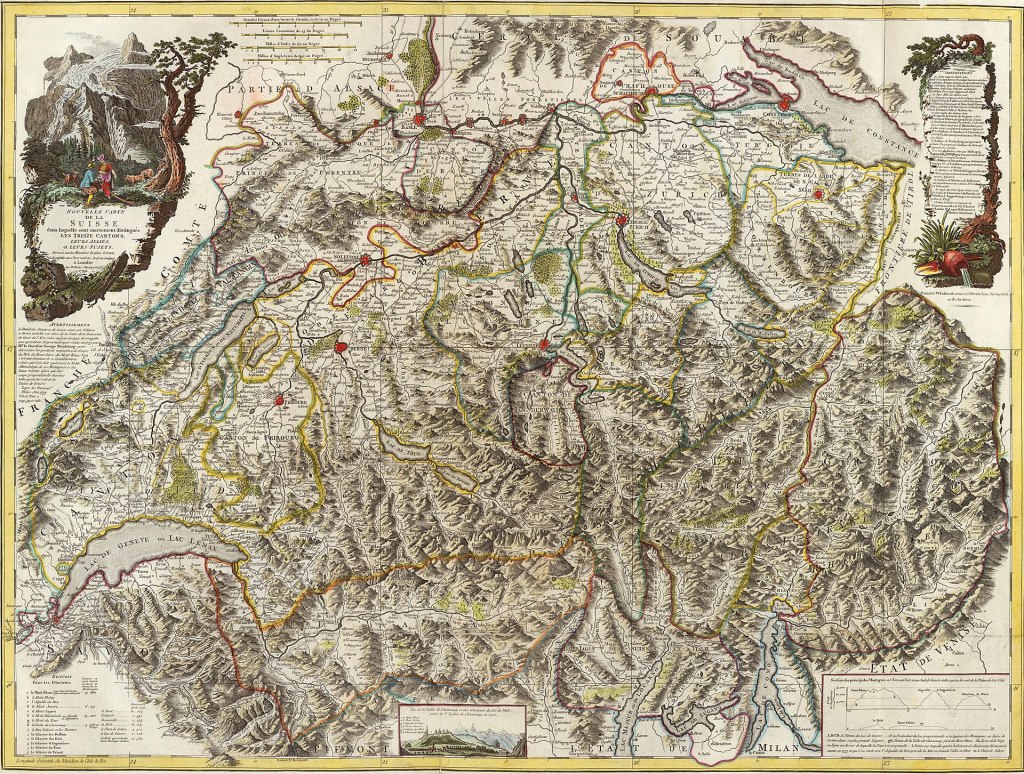
As you can see we have the Alps, some tough to traverse terrain, to the south, another gentler spine of mountains, the Jura, running along the northwest, and a juicy plateau in the middle, where you’ll find Geneva, Bern, and on up to Zurich.
Remember Otzi, the Ice Man? Here’s a reconstruction of the withered ice-mummy:
(source)
Otzi was found in the Italian Alps near Austria, and he lived around 3000 BC. Presumably there were wandering ice men and women all over what’s now Switzerland in wayback times. Now you can see Otzi in a special refrigerated chamber in the South Tyrol Museum of Archaeology in Bolzano. His murderer has yet to be identified. Boy, talk about a cold case!

A lucky or industrious iceman might’ve built himself and his family a pile-dwelling. The various alpine pile-dwellings are a UNESCO World Heritage Site. A reach, in my opinion. There’s apparently one in Bourg I may get to check out. Do the people of Bourg live any better now?

In looking into that I found this cool picture of nearby Versoix, taken in 1925 by aviator Walter Mittelhozer.

But we’re getting ahead of ourselves.
Fast forward from the iceman and the pile houses a couple thousand years. Herbert Kubly, writing the Time Life text, does a great job:
Switzerland was brought into history by Julius Caesar.
Backing up a bit:
During the Iron Age several tribes of barbaric Celts overran the area and one of them, the Helvetii, stayed. By 500 B.C. these Helvetians seem to have shared the land with a wild tribe called the Raeti, from northern Italy. They were not destined to share the land in peace.
Soon restless and powerful Germanic tribes from north of the Rhine began to press relentlessly southward.
Driven westish by these invaders, the proto-Swiss met the Romans in what’s now France. There they scored a win at Agen, in what’s now France.
According to Caesar, the captured Roman soldiers were ordered to pass under a yoke set up by the triumphant Gauls, a dishonour that called for both public as well as private vengeance. Caesar is the only narrative source for this episode, as the corresponding books of Livy’s histories are preserved only in the Periochae, short summarising lists of contents, in which hostages given by the Romans, but no yoke, are mentioned.
This episode was painted by Swiss artist Charles Gleyre:
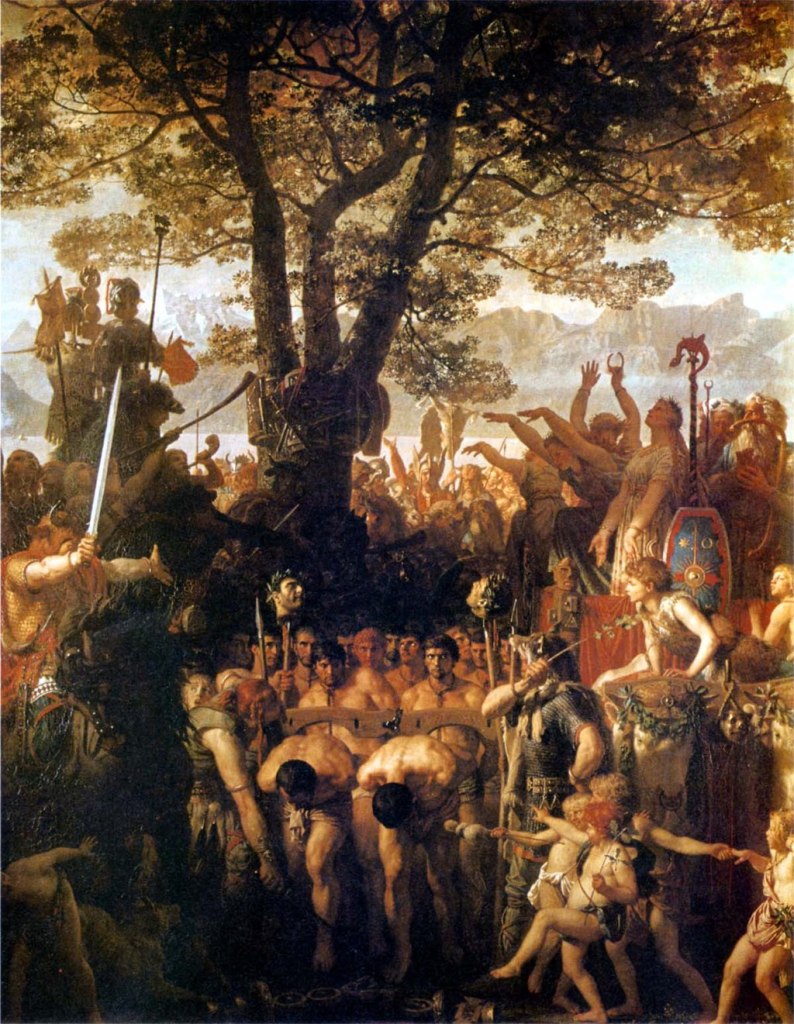
Gleyre also did a nice portrait of Sappho:
That’s now in the Musee Cantonal des Beaux Arts in Lausanne, I hope I have a chance to view it.
In any case the Helvitii victory was short lived. Caesar went after the bad boys of the plateau. Says Kubly:
In 58 B.C., a great column of men, women and children, with their cattle and provisions, started westward toward what is today southern France, their goal the mouth of the Garonne River and the Atlantic coast.
It was this attempted tribal relocation that ushered Switzerland onto the stage of world 25 history. Southern France was a Roman province and Caesar was understandably reluctant to have this disrupting human tide cross his territory. He rushed 700 miles from Rome to Geneva in eight days, marshaled six legions and defeated the Alpine tribesmen in a battle near the present-day French city of Autun. After the defeat, Caesar ordered the Helvetii to stay home.
Another version:
In 58 BC, Julius Caesar prevented the Helvetians from leaving the Swiss plateau when they wanted to avoid the Germanic incursion from the west by migrating to the south of France. They were stopped by Julius Caesar at Bibracte (Montmort near present-day Autun, Burgundy, F). He sent the Helvetians back and settled them as a “buffer people” under the control of the Roman army. After Caesar’s death, the Romans, now under Emperor Augustus, increased their influence over Swiss territory.
so says the Swiss tourist board, which has a great website. Here’s a nice Roman arena at Aventicum/Avenches:

(source: Ludovic Péron for Wiki)
There were some Roman outposts in Switzerland:
and it seems like it was mostly a good time:
The hundreds of villae found in Switzerland, some very luxurious, attest to the existence of a wealthy and cultured upper class of landowners. Many villae belonged not to Roman immigrants, but to members of the Celtic aristocracy who continued to hold their lands and their rank after the Roman conquest. Of the lower classes, much less is known, although there are inscriptions attesting to the existence of guilds (collegia) of boat skippers, doctors, teachers and traders, as well as to the existence of a trade in slaves.
A Roman era arch on Lake Geneva, thanks Hapax.
Says Kubly:
Over the succeeding centuries the troops and the Roman governors established Roman law and built towns with palaces, temples and amphitheaters. They introduced cherries and chickens to Helvetian agriculture and improved cattle breeds and the cultivation of vineyards.
Their most enduring enterprise was the construction of roads with which they crisscrossed the country, including a road over the Great St. Bernard Pass which assured permanent communication between Italy and the north.
Then it all went to hell. The “catastrophe of 260” led to the place being overrun by warlike German tribes, the Romans retreated, they were gone completely by 454 AD.
There’s a small little nook of Switzerland where people still speak Romansh, which is something like Vulgar Latin.
(source)
But mostly the Germanic / Frankish peoples would be running the show in what’s now Switzerland from now on.
Now we enter a period where like four or five hundred years goes by and very little is recorded, aside from the occasional mention of a monastery or something. What the hell was happening? “I’m in the dark here” as Al Pacino says in Scent of a Woman. It’s unfashionable to call it the Dark Ages, but… it was dark! Like literally, there was probably very little light. World Lit Only By Fire as William Manchester titled his fascinating and bizarre book. People livin, dyin, lovin. All vanished.
Says Kubly, deftly summarizing a few centuries of what must’ve been intense struggle times:
With the Romans gone, two Germanic tribes gradually took over Switzerland. The Burgundians moved in from the west. The Alemanni, invading from the north, gradually pushed the Burgundians to the Sarine River, which became the border between the two and established permanently the division which still exists today between Switzerland’s French- and German speaking peoples.
In the Sixth Century both tribes came under Frankish rule, and the country eventually became a part of Charlemagne’s Holy Roman Empire. After Charlemagne died in 814, his descendants fell to bickering among themselves and Switzerland was once again divided, this time between two of Charlemagne’s grandsons who ruled upper Burgundy and Germany. In 888, a minor despot named Rudolf seized part of the old Burgundian territories and had himself crowned ruler.
When we come back: oaths, Eidgenossenschaft, and the Bern Book.
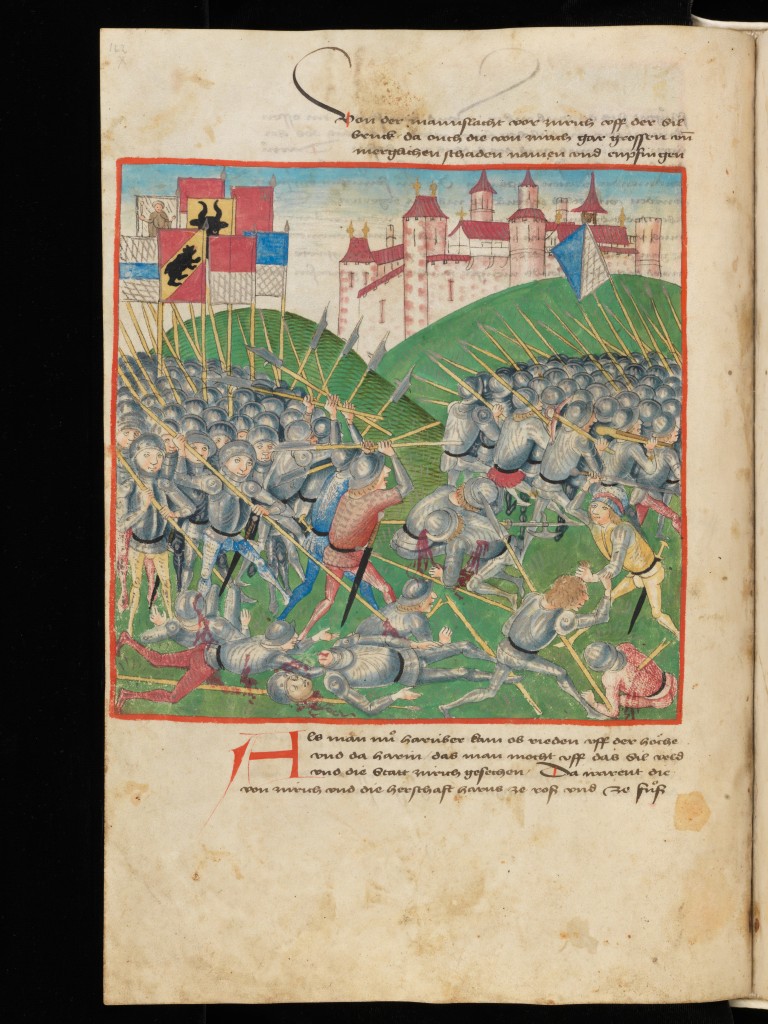
Harrison Ford on Jimmy Buffett
Posted: April 12, 2024 Filed under: music 2 CommentsSpeaking at the Hollywood Bowl tribute.
Jimmy Buffett was a cool guy. A lot of cool guys are not that nice. Jimmy was more than nice. He was kind.
paraphrase but pretty close. (oh looks like it’s up on YouTube already). Occurred to me watching that Harrison Ford probably could’ve been a great standup.
Brandi Carlisle said whenever she was in some random spot and wanted to go fishing, she’d call Jimmy Buffett and soon some salty dog captain would pick her up.
The Coral Reefers Band has held together for close to fifty years.
Everyone mentioned that Jimmy Buffett had “a twinkle in his eye.” The word “generous” came up a lot. Everyone’s story was about like flying with Jimmy (or refusing to) in St. Barth’s or meeting him by chance on some island.
If after you die Paul McCartney sings “Let It Be” at a sold out tribute to you, not bad.
More on Jimmy. May as well watch Brandi Carlisle sing Come Monday:
Dumb and Dumber and Bill Clinton
Posted: April 11, 2024 Filed under: America Since 1945, presidents Leave a comment
(source)
We’d sit on that airplane and watch—one example, the classically brilliant, stupid movie, Dumb and Dumber.
Riley
I love Jim Carrey, but that’s one I haven’t even been able to watch.
Friendly
It’s a hilariously stupid movie, and there’s Clinton sitting there. This is one of the most brilliant people I’ve ever met and he’s sitting there chewing a cigar, playing hearts, watching Dumb and Dumber, laughing hysterically, but then also not getting some of the story line. I mean partly because he’s playing cards, he’s doing a crossword puzzle, talking to somebody, and watching Dumb and Dumber. But there I am trying to describe the plot line of Dumb and Dumber to the President of the United States. This is surreal.
(source: Andrew Friendly interview at The Miller Center)
Then there were silly little things, too, like his crossword puzzles. That seems like a silly thing, but to the extent that there are pop culture clues in crossword puzzles—The Sunday New York Times is the hardest one, because they get harder throughout the week. I never noticed many pop culture references in the Sunday one, but I’m sure the Monday one might have one or two. He loved to watch cheesy movies. We’d be landing in Moscow, but he wanted to see the last minute of Dumb and Dumber before he walked off the plane or something.
Riley
Does that get him charged up, the last minute of Dumb and Dumber?
Goodin
He likes action movies better. All of this is to say he actively cultivated these lifelong friendships. By virtue of who he is and the life he’s led, those friendships are totally across the spectrum of “real people.” He has such capacity to take in everything. He’ll have as much joy talking about the latest biography of [Abraham] Lincoln as he will about the most ridiculous scene in Dumb and Dumber. He has so much real estate in his brain for these people and relationships and knowledge, and he kept himself open to as many channels as possible.
(Stephen Goodin oral history at the Miller Center)
Prorsum
Posted: April 9, 2024 Filed under: business, mountains Leave a comment
went looking into Burberry, the English clothing brand, famous for their iconic plaid.

Prorsum, on their logo, a Latin form: towards, forwards.
Turns out Burberry made a movie about Thomas Burberry:
Thomas Burberry invented the fabric gabardine and revived the name (which had been used in the Middle Ages to describe, like, overcoats). Mallory was wearing gabardine when he died trying to summit Mount Everest (he still is wearing gabardine. If you’re morbid, you can find photos of his body and see how well the Burberry is holding up after a hundred+ years).
Guns on the Western Waters, H. Allen Gosnell
Posted: April 6, 2024 Filed under: War of the Rebellion 1 Comment
Can you imagine seeing this in color? Fire in the darkness reflecting on the flowing water? The sounds?

Ulysses Grant, who heard the screams of the wounded at Shiloh, Cold Harbor, the Wilderness, a hundred other battlefields, uses the word “sickening” only twice in his Personal Memoirs: once to describe a bullfight he saw in Mexico, and once to describe “the sight of the mangled and dying men which met my eye as I boarded” the USS Benton, a steamship, after a battle on the Mississippi River off Grand Gulf, Louisiana.
It’s incredible. The amazing things about naval engagements are the accounts of men firing eight-inch guns at each other from a range of eight-feet. I’m afraid that is beyond my understanding. But they did it all the time in naval battles. It was a very strange business.
So said Shelby Foote in a Naval Institute Proceedings interview. In that same interview:
Naval History: Many regimental histories were written for Army units in the Civil War. Why was that apparently not the case for the Navy?
Foote: I really don’t know. No big Navy man even wrote his memoirs, did he? Guns on the Western Waters was one of my main sources. And I use the naval Official Records. But I have found a shortage of naval material.

I got so much value out of this book, which I bought used via Amazon. Gosnell was a Lt. Commander in the Navy Reserve. I can find little else about him except possibly this letter?:

Anyway his book is terrific. Here’s how it begins:

The book is indeed mostly firsthand accounts of the river battles along the Mississippi during the War of the Rebellion (fka Civil War).
It’s arguable that all the drama with Lee in Virginia was just a sideshow/violent pageant, that the real war was won and the rebellion ended when the Union seized the Mississippi from New Orleans to Illinois, slicing the Confederacy in half. This was finished by July 4, 1863. When it was done the guy who did it, Grant, was brought east to mop up the operations there.
The best section of Guns On the Western Waters is David Dixon Porter’s story of an expedition along the Yazoo River backwaters, and what he encountered there. Next best is Junius Henri Browne’s tale of a night in a boat passing under the guns of Vicksburg, from his Four Years in Secessia. Gosnell says he’s sometimes edited accounts to make them less graphic, but guys are still trampling around in their shipmate’s brains. These battles were infernal, boilers would explode scalding people, if they didn’t write their memoirs maybe it’s because it was too intense to think about, plus half of them were dead.
When Grant heard that Junius Henri Browne and his fellow “Bohemians” (a gang of war correspondents who don’t seem super likable) were lost this is what he said:

An unsung hero of this era is James Buchanan Eads

who was contracted to construct the City Class ironclads for the war on the Mississippi, and built seven in five months.

The Union was just superior to the Confederacy in building, technology, mechanizing. Arguably Confederate Navy Secretary Stephen Mallory did the best he could with a challenging situation, and for that he has a nice square named after himself at Key West. But throughout the war we just find a more effective machine destroying a feebler competitor.
Eads has a bridge named after him near St. Louis. I said unsung earlier but I guess he’s reasonably sung. And how about his wife, Martha Dillon Eads?:

Sysco
Posted: April 5, 2024 Filed under: business Leave a commentYou’ve probably seen a Sysco truck around, they’re a massive wholesale food distribution company. They’re mentioned a few times in Kent Taylor’s book, so I looked into the company. Here’s their CEO:

I thought this was funny:

When you click:

Santa Anita Derby
Posted: April 5, 2024 Filed under: Uncategorized Leave a comment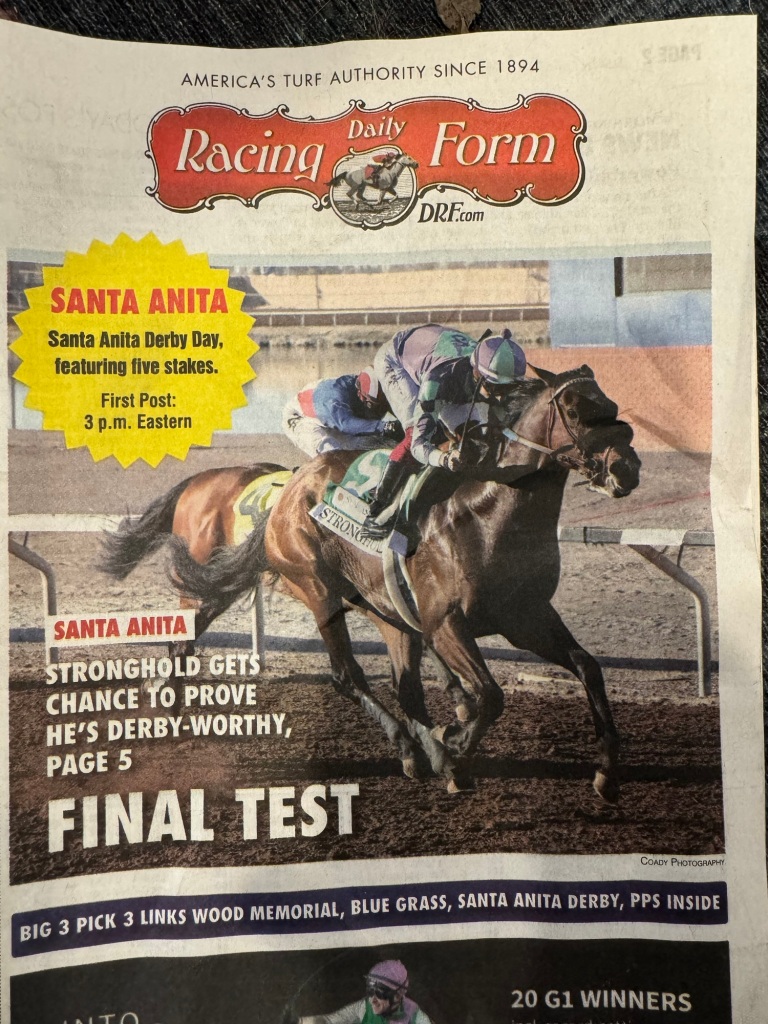
Tomorrow at Santa Anita an interesting Derby is shaping up.

Sort of a good vs evil thing against Bob Baffert’s Imagination

Plus we can’t rule out Wynstock.
Kent Taylor, Made From Scratch
Posted: March 30, 2024 Filed under: business, food Leave a comment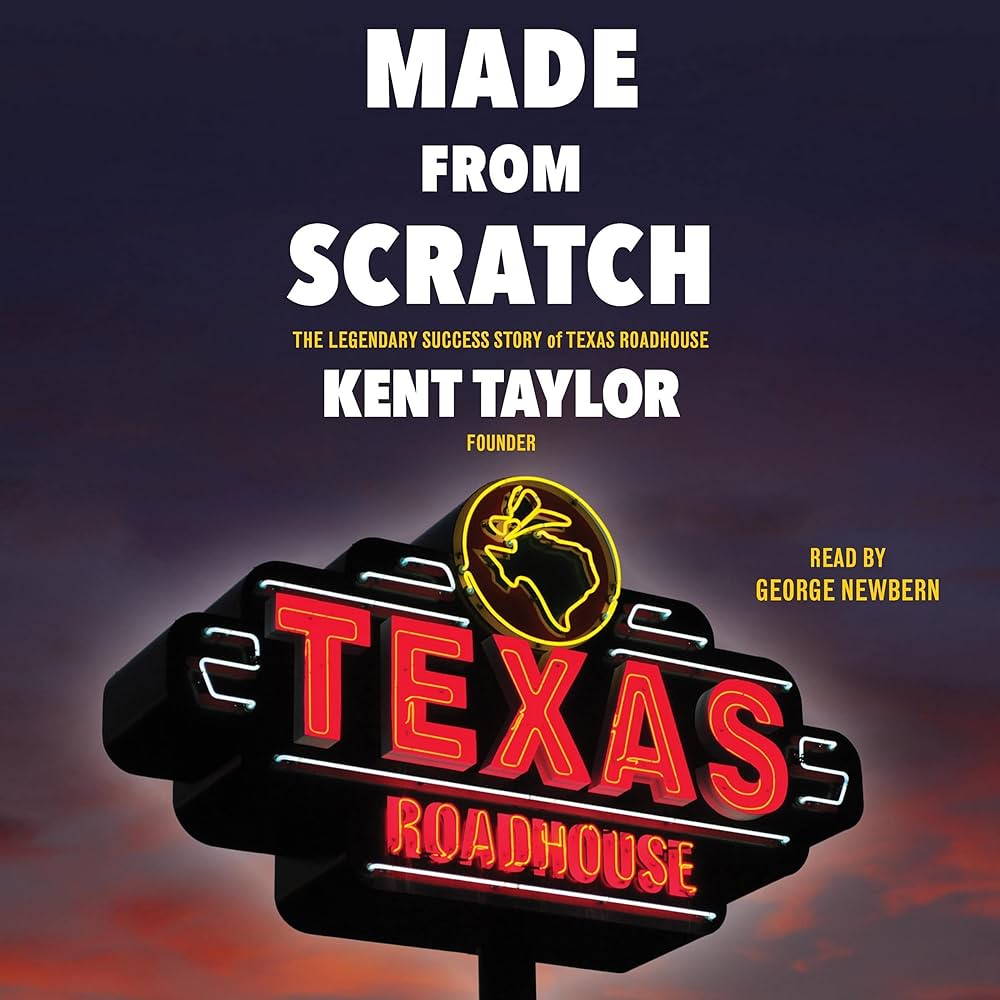
Kent Taylor was a spectator at the 1971 NCAA cross-country championships:
I will never forget [Steve] Prefontaine powering through that tough hilly course, challenging anyone to catch him as he picked up the pace on each rise, daring all comers to endure pain only he was capable of enduring. Steve won the race, no problem, and wore about him afterward an aura of extreme confidence that captivated me. Still, to this day, I can remember that look, as if he wanted his challengers to bring on whatever they had, and he’d find a way to bring that much more.
Kent Taylor was a skinny kid who was kicked off the football team by a coach who told him he might die out there. He went into track and cross country and drove himself to become better. One summer he trained by running over a thousand miles. He got good enough that with some persistence and luck he got a partial scholarship to UNC. There he ran the steeplechase, obstacle running complete with a water hazard.
Kent Taylor had drive. After college he moved back to Louisville, managed some nightclubs in Cincinnati, managed a Bennigan’s in Dallas for a bit, worked for KFC. What he wanted to do was launch his own concept for a restaurant: Texas Roadhouse.
My initial thought regarding Texas Roadhouse was to combine a rough and somewhat rowdy live music joint with a reasonably priced restaurant featuring steaks and ribs. I wanted to have the same quality of beef that Outback and Longhorn featured at the time, but with price points more similar to Chili’s and Applebee’s. I wanted to target the blue-collar segment of America (my peeps) who would be comfortable with jukebox country music and a casual and lively atmosphere with energetic servers in jeans and T-shirts. In short: Baby, if you want to dress up, then visit somewhere else; but if you want to dress down, we would welcome you with open arms and a warm smile.
Two of his first investors were Dr. Amar Desai and Dr. Mahendra Patel. The concept sparked but there were bumps. Kent opened the second restaurant in Gainesville, Florida 700 miles away from the first one because he had good memories of Gainesville. Three of the first five restaurants failed. But Kent Taylor and the Roadhouse team started to figure it out:
Another idea was to offer free rolls. We played around with giving out popcorn, something for people to munch on immediately, but realized we wanted the smell of rolls to hit our guests when they walked in. If we were going to offer them, though, I wanted to get the recipe perfect. I set my assistant kitchen manager, Rod, to driving all over town to buy as many types of flour and yeast as he could find. We then experimented. Rod and I would try this type of flour with this type of yeast, adding so much water, so much oil, and a dash of sugar and a few other ingredients for good measure. Then we tried again. We also experimented with dozens of variations to proof and bake the rolls. Nothing tasted right. I wanted a fairly sweet roll, but sugar and yeast fight each other, so I needed a flour that would work with both. The process of discovering the best Roadhouse rolls consumed our waking days for three weeks. I’m pretty sure it also consumed Rod’s sleep. He probably dropped off at night counting bags of flour. I was tormenting the poor guy with my relentless pursuit of the perfect roll. Finally, we hit it when we mixed a certain flour with another flour. The mix came together in no time and we created the rolls we use to this day. Our honey cinnamon butter followed a similar process, eventually finding positive results.
Kent had a vision for restaurants that was something like Wagner’s for opera*. He wanted immersive, overpowering. The word Legendary, that’s key. Legendary food, legendary service, legendary margaritas. Texas Roadhouse is full of wood and tin: Kent wanted it loud. Big neon signs on the places are the only advertising. Texas Roadhouses don’t open for lunch** because Kent Taylor envisioned one big, energized shift, almost a performance
We had the chargrills visible to the guests, a meat display case to view our freshly butchered steaks, and you could smell the steaks cooking and the freshly baked bread coming out of the oven. The six senses would come alive for our guests—sight, smell, taste, hearing, and touch. The sixth sense was a feeling of a warm and friendly vibe.
It worked. There are 741 Texas Roadhouse restaurants in 49 countries. The nearest one to LA would be either Rialto or Corona, CA. This makes sense: LA real estate is expensive and Texas Roadhouse knows to their customer every dollar matters. Being involved in the community is part of the business model and the Kent Taylor vision.
On a recent trip down the 10, we stopped at the Rialto location. It was just after opening time (3pm) and there was already a 20 minute wait. It was all there, just as Kent described. Friendly people, country music, wood and tin. The sweet rolls with the cinnamon honey butter are brought to your table as you sit down. Bag of peanuts waiting for you. No server has more than three stations so they’re on top of it. We signed up for the Texas Roadhouse VIP Club beforehand, which merits you a free appetizer: we got rattlesnake bites of course, delicious. Part of the popularity might be the $13.99 Early Dine Menu. You’re getting a steak dinner for under $14. Tried the Legendary Margarita, and it was a lot of fun. By the time we left every seat at the bar was occupied. There were big families, elderly couples, hard-work looking dudes having some cold ones.
Kent Taylor in this book comes through as such a boosterish, positive person that it’s hard to grapple with his end. From The Wall Street Journal, March 2021:
After coming down with a mild case of Covid-19, W. Kent Taylor found himself tormented by tinnitus, a ringing in the ears. It persisted and grew so distracting that the founder and chief executive of the restaurant chain Texas Roadhouse Inc. had trouble reading or concentrating.
Mr. Taylor told one friend he hadn’t been able to sleep more than two hours a night for months.
In early March, he met friends at his home in Naples, Fla., and led them on a yacht cruise in the Bahamas. Some of those friends thought he was finally getting better. Then his tinnitus “came screaming back in his head” last week, said Steve Ortiz, a longtime friend and former colleague.
On Thursday, March 18, Mr. Taylor died by suicide in his hometown of Louisville, KY.
Very sad. But his vision lives on. I predict Texas Roadhouse will continue to succeed as long as they remember the lessons of founder Kent Taylor. He’d seen what happens when you lose that:
The decline of Bennigan’s was another wake-up call to keep our standards sky-high and not slip into corporate-think. Thankfully, our company is run by people who have grown up in actual restaurant operations and many were eyewitnesses to either Chi-Chi’s or Bennigan’s’ demise.
* not that Kent would use this comparison. He preferred: Willie Nelson, Three Doors Down, Keith Urban, Kenny Chesney, Aerosmith, etc. Mentioning who played at which corporate celebrations is a big part of the book
** some of them do open for lunch one day a week, usually Friday or Saturday
A lunch in Florida
Posted: March 23, 2024 Filed under: business | Tags: art, books, disney, travel Leave a comment
Not sure we’ve ever seen the kind of shade on a restaurant as Harriet Agnew provides in the latest Lunch w Financial Times, with Nelson Peltz, at his own restaurant:
It’s the proprietor’s prerogative — Peltz’s 19-year-old investment firm, Trian Partners, owns the building and the Italian restaurant is their de facto canteen. Soon the elevator-style music quietens down and we settle at our table on the outdoor terrace
Peltz declines wine – always a bad sign in Lunch FT:
As we begin our starters — slightly flavourless mozzarella and tomato in need of seasoning, with roasted peppers — Peltz tells the story of Triangle Industries, his focus in the 1980s. Fuelled by the junk bonds of his friend Michael Milken, he and his business partner Peter May built it into the largest packaging company in the world, before selling it. They later bought and lucratively sold the Snapple beverage business.
They talk about Peltz’s campaign to win a contested fight for some board seats at Disney (asked if he would fire Kevin Feige, who masterminded like 60 winning Marvel movies, he doesn’t say yes but expresses displeasure):
By now our main course has arrived: filleted snapper in a gloopy artichoke, mushroom, tomato and white wine sauce, served with sautéed spinach.
In terms of lunch, it doesn’t seem billionaires have it that much better. Here’s a link.
Publicly traded American restaurant groups
Posted: March 22, 2024 Filed under: business, food 1 Comment
Bloomin Brands (ticker symbol: BLMN) owns Outback Steakhouse and Fleming’s. 50 new Outback Steakhouses opened in Brazil since 2021.
There are 3,427 Chipotles (CMG) in the United States, with 97,660 employees. Here’s Slate recently on Chipotle’s dominance:
But despite that backlash, the fact remains that for a lot of Americans, from San Diego to New Haven and everywhere in between, Chipotle has become effectively synonymous with good Mexican eating. When the Wall Street Journal interviewed Mary Hawkins, the mayor of Madison, Mississippi—one of the tiny population centers Chipotle has in its sights—she said the town had recently polled its citizenry about the brands it would most like to see take up residence on its streets. Chipotle, perhaps unsurprisingly, came in first, and Arellano does not see that trend slowing down.
“It’s like Galactus from Marvel Comics. It’s eating up burrito cultures from across the country,” he said. “Chipotle taught an entire generation of Americans to eat a very specific style of burrito. If they want a burrito, they’re going to want the one they grew up with and neglect the other styles.”
McDonald’s (MCD) of course is the king, with 42,000 stores. Here’s Ian Borden, McDonald’s CFO, being interviewed at a UBS conference:
Dennis Geiger
That’s great. Want to go over to core menu. And you just talked about some of the opportunities at chicken I think in particular. As we think about beef, chicken and coffee and some of the biggest opportunities to kind of further your advantages on core menu anything else to kind of highlight there across those key equities?
Ian Borden
Yes. Sure. Well look I talked about core is critically important. 65% of our global system-wide sales, $17 billion brands across that core categories and I think a few headlines under each of those three. Beef obviously we’re by far the largest player in beef globally. We’ve gained share since 2019 pretty consistently across our markets. I think a couple of the key things from an opportunity standpoint in beef. Best Burger which is just a series of what I’ll call small changes in how we cook and prepare our core beef products that’s been out to about 70 markets. It’s going to be in the rest of the system by end of 2026. It’s driving significant improvements in taste and quality. Taste and quality are the two biggest drivers of consumer visits to our restaurants. So that’s impactful.
The second thing on beef that I think is worth highlighting is the opportunity we see around large burger. And it’s a good example of how I think we are more precisely understanding consumer need and then getting after that consumer need and I’ll call it a one-way approach. So we’ve tried to get after this opportunity for a number of years because we thought the opportunity was about premium burger which was wrong. And we — so we didn’t — we weren’t successful. We now understand what the opportunity is for a large more satiating-type burger. That opportunity is significant. It’s consistent across many of our large markets.
And we have innovated a couple of products that we’re in the process of piloting. We’re going to pilot those products in two or three what we call market zeros. We’re then going to — if those products work we’re then going to scale one solution to that opportunity globally where in the past you would have seen us probably try and get after that opportunity in 20 different markets in 20 different ways and then you don’t have the ability to build a global equity that you can drive at scale. So that’s a little bit about beef.
McDonald’s is essentially a real estate company with a restaurant system they can affix and then turn over to franchisees.
The Darden Group (DRI) owns: Ruth’s Chris Steak House, Eddie V’s and The Capital Grille, Olive Garden Italian Restaurant, LongHorn Steakhouse, Bahama Breeze, Seasons 52, Yard House and Cheddar’s Scratch Kitchen. Until July 28, 2014, Darden also owned Red Lobster. Darden has more than 1,800 restaurant locations and more than 175,000 employees, making it the world’s largest full-service restaurant company. (says Wikipedia). There are 77 Ruth’s Chris and 562 Longhorn Steakhouses.
Brinker (EAT) has Chili’s and Maggiano’s Italian Grill. They’re having a killer year, surprising to me to learn, as the local Maggiano’s is closed and troughs of Italian slop don’t seem in fashion. But my heart still warms at the thought of Chili’s. Norman Brinker was a pioneer of the casual dining space.
Dine (DIN) owns IHOP (1,787 restaurants), Applebee’s (1,654) and Fuzzy’s Taco Shop (137 branches). The local IHOP near me is closing. A few years ago I tried an Applebee’s and was dissatisfied with the experience. I’ve never even seen a Fuzzy’s. As for pancakes, feels like they peaked as a food in like 1880?
Domino’s has 20,197 franchises. Their stock (DPZ) over the last twenty years returned investors something like 2,600% (vs 239% for the S&P 500). The key is the easy to use app.
Restaurant Brands International (QSR) has Burger King, Tim Horton’s, Popeyes, and Firehouse Subs, for a total fo 30,375 franchises. Noted investor and Harvard administration gadfly Bill Ackman has a big position in QSR, as well as Chipotle. In his recent Lex Friedman podcast he noted that some of his biggest wins have been in restaurants.
Shake Shack (SHAK) has expanded very fast, they now have 440 stores. I remember going to the very first branch in the summer of 2009, before starting my new job on 30 Rock. Who was in line behind me but Scott Adsit?!
Texas Roadhouse (TXRH) is booming, returning 738% for investors since founding. The story of founder W. Kent Taylor is worthy of its own post, when I have the time. I listened to a couple podcasts, one with Jerry Morgan, current CEO and one with VP of communications Travis Doster, and they project a “fun with purpose” coherent and vigorous company culture inspired by Kent Taylor’s vision.
Starbucks (SBUX) has 10,628 company owned stores and 18,216 licensed. Personally I consider that a drug dispensary rather than a restaurant.
Wendy’s (WEN) has 7,095 restaurants worldwide. Their new CEO Kirk Tanner made some noise recently with his comments about AI order-taking and flexible pricing, which the company then walked back. It sounded kinda fun to me (what if you could get a deal at an off hour or something) and made for many a meme. Kirk Tanner seems to get in the news a lot: Wendy’s doing drone delivery was a headline on Drudge the other day. Those all seem like distractions or possibly stunts? Wendy’s big play at the moment is expanding into breakfast.
Wingstop (WING) is growing fast: 1,996 restaurants. The stock has doubled in the last year. The people love wings!
Yum Brands (YUM) with KFC, Pizza Hut, Taco Bell, and Habit Burger is on another level. They opened 4,754 new units last year.
Jack in the Box (JACK) swallowed Del Taco a few years ago. Here’s CEO Darin Harris speaking about the culture of servant leadership. I like what I hear!
New York hot dog chain Nathan’s and Chicago hot dog chain Portillo’s are both public companies, NATH and PTLO respectively. I’m not bullish on the future of hot dogs myself. If I were on the board of Nathan’s (I’m not) I’d lean into the hot dog eating contest aspect. That could be completely the wrong way to go, who knows, but they’ve got to take a swing.
I’ve never seen a Kura Sushi, but some investors appear to be optimistic about the technology-enabled Japanese sushi concept – the stock (KRUS) is up 41% this year.
Casey’s (CASY) runs some 2,500 gas station pizza joints in the Midwest. The Casey’s in Corning, Iowa was the only place to eat one Sunday night last summer. It was not bad at all! Iowan amigo Brooks tells me it’s beloved, that you should try the sausage pizza. Not much more is easily available to me on founder Donald Lamberti other than that he is in the National Sprint Car Hall of Fame. “Kind of a monopoly on many, many tiny markets”? A growing business.
Flanigan’s (BDL) is a Florida chain famed for their dolphin sandwich (don’t stress, it’s actually mahi mahi). Why it’s publicly traded doesn’t make sense to me, but there you go. I’ve never been, I collected a firsthand report or two that suggested it’s a real good time, if not necessarily Wall Street’s most ambitious concern.
Some amateur investor types love RCI, aka Rick’s (RICK), a chain of strip clubs, on the thesis that it’s kind of hard to launch a new strip club, as nobody wants ’em in their neighborhood. I’m not sure Bombshells counts as restaurants, but a publicy traded strip club joint with an expressive CEO is a noteworthy indicator.
Anyone been to a Chuy’s (CHUY)?
On May 31, 2001, then President George W. Bush’s twin daughters, Jenna Bush and Barbara Bush, were cited for using fake IDs at the Barton Springs Road Chuy’s, which put Chuy’s in the national spotlight
Next time in Austin maybe. What’s the gameplan for Chuy’s? From their recent earnings call:
As we look ahead, we will continue to do what we do best to provide our guests with fresh, made from scratch food and drinks at an incredible value. Despite weather issues across the country that has impacted the restaurant industry in January, we believe the initiatives we put in place to drive long-term sustainable top line growth and profitability has positioned us well to weather these near-term challenges.
With that, let me provide some update on our growth drivers. Starting with menu innovation. As we mentioned on our last call, we introduced our first barbell approach to the CKO platform during the fourth quarter, and we were very pleased with how well it was received by our guests. In fact, this was our second most successful Chuy’s Knockouts campaign to-date.
Following this success, we were thrilled to introduce to our guests the next CKO iteration in late January with Shrimp & Crab Enchiladas with Lobster Bisque sauce as a higher-priced CKO menu item, along with Macho Nachos and the Cheesy Pig Burrito. Again, early feedback continues to be positive as our CKOs are resonating well with both new and returning guests.
Alongside our exciting CKO offering, we recently added several new menu items to our permanent menu, including reintroducing the Appetizer Plate and adding the Burrito Bowls. If you recall, Burrito Bowls were part of our CKO platform during the second and third quarter of 2023 and this menu
etc etc. Good luck Chuy’s!
And of course, Cheesecake Factory (CAKE), much mocked, but enduring. Ate there the other day with some colleagues. You know what? My Santa Fe Salad was good. What do we think of this?:
Much lunch conversation turned on this.
CAVA is a new Mediterranean restaurant concept from the East Coast. A new one appeared here in LA. I tried it. Their operating system was not perfect (in fairness, think this is a new branch). Kinda salty?

The stock seems to excite investors, possibly because everyone is looking for “the next Chipotle.” Appears to be up 5% just today! I checked in with one of my Vibes Reporters:
i have had cava once. ok but didnt feel the need to go back
Kinda how I felt? The pita chips are fun. I just don’t think Mediterranean food will have quite the appeal of Chipotle.
Sweetgreen (SG) is a salad deal, I’ve tried that one. Somehow, I always feel gross afterwards.
On the other end of the spectrum is Cracker Barrel (CBRL) serving Southern-inspired slop to old people. Valueline reports:
Macroeconomic factors have impacted Cracker Barrel Old Country Store’s sales. Elevated inflation, though now apparently easing, has stressed the company’s customers. Many of these customers are in the 65-and-older demographic, commonly characterized as a fixed-income category. Management is working to bring in more of a younger crowd into Cracker Barrel restaurants and in-location retail shops,
Good luck guys, but this looks to me like the past, not the future:

Then again, Cracker Barrel has (had?) their loyalists:
From 1977 to 2017, married couple Ray and Wilma Yoder drove a combined total of more than 5 million miles (an average of 342 miles per day) to visit 644 Cracker Barrel locations. When the company opened their 645th restaurant, in Tualatin, Oregon, in August 2017 (on Ray Yoder’s 81st birthday), it flew the Yoders out for the grand opening and presented them with custom aprons and rocking chairs, among other gifts.[52][53]
Yoshiharu (YOSH) is a Southern California ramen concept I have yet to try. There’s also Noodles & Company (NDLS). Why is their ticker symbol not NOOD? Missed opportunity. The noodles game seems too competitive to me, talk about low margins.
But then again look at the big winners here: MCD, DPZ, CMG. Burgers, pizza, burritos. You couldn’t come up with businesses with more competition, no barriers to entry. And yet these three systematized delivery and managed quality control in such a way as to create unstoppable empires.
I began this post as I was reading Value Line’s restaurant issue and enjoying contemplating the massive scale of these restaurant chains. As an occasional restaurant consumer I can engage with these places and sense their vibe, it’s a sector I can know in a way I can’t know, say, semiconductors or industrial products. So it’s an engaging, practical and delicious topic for our continued education in business.
Restaurant Business might be the next frontier to explore. They have a daily podcast!
Growing at exactly the right pace and to exactly the right size seems like the key for restaurant stocks. On his Invest Like The Best podcast, Patrick O’Shaughnessy interviewed Capital Management’s Anne-Marie Peterson. She talked restaurants:
So restaurants are different from retail because it’s not as easy to scale. There aren’t a bunch of large cap restaurant chains unlike retail. The franchise model is pretty powerful and what Chipotle has done is pretty powerful, too. But the similarities are like real estate matters, the store experience matters. But in a tight labor market, it’s tough.
And what’s interesting about McDonald’s — I have such an affection for that company. It works everywhere. They have one concept. I think it’s 60% or 70% of their operating income is from rent. They’re a landlord. They control the real estate. The others didn’t, so that’s why they’ve endured. They had a big insight about like let’s own the real estates so our franchisees don’t get whipped around with pricing, and we can co-invest with them in the experience.
And now digitals. The mobile ordering is enhancing the productivity and reducing even those kiosks. That need for labor and in a tight labor market, it’s big. The little guys can’t invest. They have some external dynamics now that are contributing to scale. But it’s really interesting.
Rory Sutherland brought up McDonald’s automated screens on Rick Rubin’s Tetragrammaton podcast. He wondered if they might allow for customers to make certain shameful orders they feel bad about saying to a person. I’ve tried out the automated screens, they work great at getting you your junk, but they make the world a little less human.
Remember when Eric Schlosser’s book Fast Food Nation came out in 2001? Absolutely everybody was reading it. They made a movie (pretty good! Richard Linklater). Yet here we are, almost twenty five years later, eating more fast food than ever.
I was reading The Lorax to baby and it reminded me of Schlosser.
Here’s a more comprehensive list of restaurant stocks as I’ve skipped a few, notably Denny’s (DENN, slumping), Red Robin (RRGB, hopeless), El Pollo Loco (LOCO, stop trying to make citrus-marinated chicken happen), BJs, a few others.
“Treat” shops such as Krispy Kreme are beyond the scope of this post.
Black Swan vs Sarco
Posted: March 20, 2024 Filed under: horses, the California Condition 1 Comment
(source)
Black Swan was a mare, a horse in Australia whose reputation reached Jose Antonio Andres Sepulveda all the way in California.
The Sepulveda family was Southern California aristocracy, landowners whose holdings ranged from what is now Newport Beach to Santa Monica.
Sepulveda bought Black Swan sight unseen and had her sent to San Francisco:
When the fragile creature stepped off the gangplank in San Francisco in late 1851, along with her traveling companion, a gray gelding named Ito, she was unsteady, gaunt and sickly. Onlookers were not impressed.
Sepulveda turned the horse over to Yankee trainer Bill Brady.
Communicating with his gentle touch instead of force, Brady took her over winding paths, carefully avoiding sharp stones and other hazards that might injure her.
As he waited, Sepulveda hatched a plan that turned into a bonanza. His purse was still fattening with the enormous profits he began reaping three years earlier, when the discovery of gold had driven up the price of beef, and he delighted in racing and gambling.
Sepulveda challenged Pio Pico to pit his stallion Sarco in a race against Black Swan.
[Sepulveda] made sure that a crowd, among them Pico, was in Los Angeles when Brady rode into town on Black Swan. Seeing the mangy and emaciated mare only confirmed Pico’s and his cronies’ opinion that the majestic, cinnamon-colored Sarco was invincible.
Recklessly, Angelenos wagered their life savings on Sarco. Carrillo family members bet their last $400. The total bet in the $50,000 match race: $25,000 each in octagon-shaped gold slugs, in addition to 500 horses, 500 mares, 500 heifers, 500 calves and 500 sheep.
Sepulveda, Brady and Sepulveda’s son-in-law, Tom Mott, had three months to condition Black Swan. While building up her weight, they exercised her with discretion, running her after dark when no one could see her.
Pico and his hard-core betting pals were confident that Sarco was the better horse and therefore needed no training–an unbeatable mount, powerful and ready for a race at any moment.
As the date–March 20, 1852–drew near, the excitement and the bets grew higher. The Avilas and Duartes, who were friends of Sepulveda, bet a “bottle of brandy, two broken horses and $5.” For others just as low on cash, every animal imaginable–cattle, horses, goats, pigs, chickens–was fodder for a wager, along with land and furniture.
Families from as far away as San Francisco and San Diego arrived for the race, which began at what is now 7th and San Pedro streets.
The track extended 4 1/2 miles south to a wooden stake, where the horses and their riders turned around and headed back to the start.
Springtime mustard plants growing 10 feet tall lined the roadway, making it difficult to see. Bystanders stood in their wagons and climbed trees, gates and rooftops of the occasional house.
As the tension mounted, Sepulveda’s wife, Francisca, arrived in her carriage, holding a fortune in gold coins. Unwrapping her handkerchief, she ostentatiously handed each of her servants and many bystanders a shiny $50 gold piece to bet on the race.
A gasp of astonishment went up when Black Swan appeared, no longer looking like a sickly nag, but sleek with a shiny blue-black mane. Mounted on her back, sitting in a lightweight English saddle, was a small black man, dressed in bright clothing with a small cap turned backward on his head. Atop Sarco sat a hefty Mexican youth in a heavy Western saddle.
…
With so many animals made nervous by the crowds, the starter began the race not with a gunshot but with the cry of “Santiago!”
Sarco jumped out to an early lead, and all those betting on him breathed a sigh of relief. Many leaped to their own horses and followed, tearing through the mustard plants. But the fleet horses soon lost them, and the spectators headed back to watch the finish.
Frenzy gripped the crowd at the halfway mark when Black Swan pulled ahead. Sarco strained every muscle to keep up with the speedy little foreigner.
Nineteen minutes, 20 seconds from start to finish, Black Swan crossed the finish line five lengths ahead. She was bleeding from her nose and flanks from the spurs, and foaming from her mouth.
Racing fans stood around in stunned silence, as others broke down and cried. While Sarco tasted his first defeat, Black Swan, in her moment of triumph, wiped out entire family fortunes. The race contributed to the downfall of Pico, who lost $25,000 and who, more than four decades later, would die penniless.
All that from a 2001 LA Times piece by Cecilia Rasmussen. Not sure her sources, they sound vivid!
The Bowers Museum has a portrait of Sepulveda riding Black Swan:
Sepulveda’s son-in-law and a witness to the race wrote later that not much of it could be seen except for the start and the finish because the wild mustard plants stood ten feet high on both sides of the road. Soon after the race Sepulveda took Black Swan to El Refugio, the elaborate adobe home and acreage he had purchased from Domingo Yorba about 1854. El Refugio was located near present day First and Sullivan Streets in Santa Ana. It has been said the family used to feed the horse sugar from the veranda.
A walk beginning at Seventh and San Pedro might be one of the worst nine mile explorations you could make in LA, that’s the butt end of Skid Row.
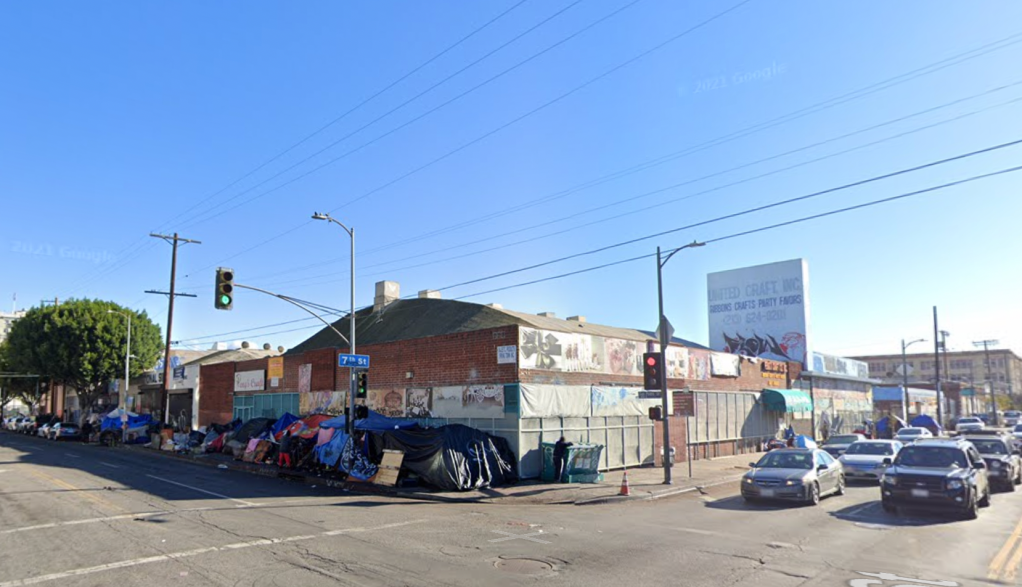
The poet Fred D’Aguiar took the race as inspiration for a book of poems, For The Unnamed.
For the Unnamed was originally entitled ‘For the Unnamed Black Jockey Who Rode the Winning Steed in the Race Between Pico’s Sarco and Sepulveda’s Black Swan in Los Angeles, in 1852′. That title provided the full narrative in a nutshell: we know the names of the owners of the two horses, we know the horses’ names, the place and date of the race. But apart from his colour, and his victory, we know nothing about the jockey who made the whole thing happen.
(cheers to reader Raj V for putting me on to this tale).
Scale
Posted: March 19, 2024 Filed under: Uncategorized Leave a commentSometimes I’m struck by how jarring a transition in scale has occurred in human life in the last few hundred years. Sure, there’ve been all kinds of massive changes in information speed, travel speed, etc. But don’t ignore simple scale of size. What was considered a big, grand, monumental building in 1776 is now dwarfed by even a mundane office building. Or take the Rainier Club in Seattle:
A good list to review:
https://en.wikipedia.org/wiki/List_of_tallest_structures_built_before_the_20th_century
New Podcast
Posted: March 16, 2024 Filed under: bible Leave a comment
We’ve discussed the book of Mark in the past. Probably (?) the oldest gospel, it’s not very long, about 11,000 words. It was written in Greek, which was a second language to many of the people encountering it. So the language is simple. It tells the story of the life, teachings, and death of Jesus. A sort of afterward that was possibly tacked on later adds a bit about the resurrection.
Much to consider, in short. I teamed up with my pal Brett Vanderzee, pastor of The Springs church in Edmond, Oklahoma to discuss this book chapter by chapter in a new podcast. I try to take a look at the book as a narrative/story, and figure out why this story keeps getting told 2,000 years later. Brett comes at it from a deep background in Bible study. Along the way we have a number of interesting guests from the worlds of both Hollywood and Bible scholarship. Join us won’t you?
Available on Apple podcasts and should be up wherever you get podcasts (some listeners report they can’t find it on Spotify, looking into it).
And do rate and review if you enjoy!
https://podcasts.apple.com/us/podcast/episode-1-mark-1/id1734809962?i=1000648968238
Texas
Posted: March 12, 2024 Filed under: Uncategorized Leave a commentCan you name these major rivers of Texas? from this excellent book my wife got at the thrift store:
I’ve been reading it to my daughter (she finds it somnolent).
Pretty map:
S
Posted: March 11, 2024 Filed under: business Leave a commentIn the book’s preface, Smil writes that most growth processes—“of organisms, artifacts, or complex systems”—can be plotted on a so-called S-shaped, or sigmoid, growth curve, meaning that the rate of change increases slowly at first, then increases rapidly, then levels off. An error that humans make with similarly predictable regularity is to assume that the nearly vertical middle segment of an S-shaped curve can continue at that angle indefinitely (the price of Dutch tulips in the seventeenth century, the price of bitcoin in the twenty-first). One of his conclusions is that the steady, unceasing economic expansion that economists and politicians dream of is not sustainable, and that the relentless pursuit of growth is environmentally disastrous. Smil has often said that he doesn’t make forecasts—“a pathetically and inexorably ever-failing endeavor on any level,” he told me—but predictions of a kind are implicit in much of his work. In “Growth” ’s coda, he writes, “Continuous material growth, based on ever greater extraction of the Earth’s inorganic and organic resources and on increased degradation of the biosphere’s finite stocks and services, is impossible”—a principle that, in various forms, animates almost all his work, beginning with his undergraduate thesis.
from The New Yorker’s profile of Vaclav Smil. I got much value from his book on natural gas, still working on How The World Really Works.



